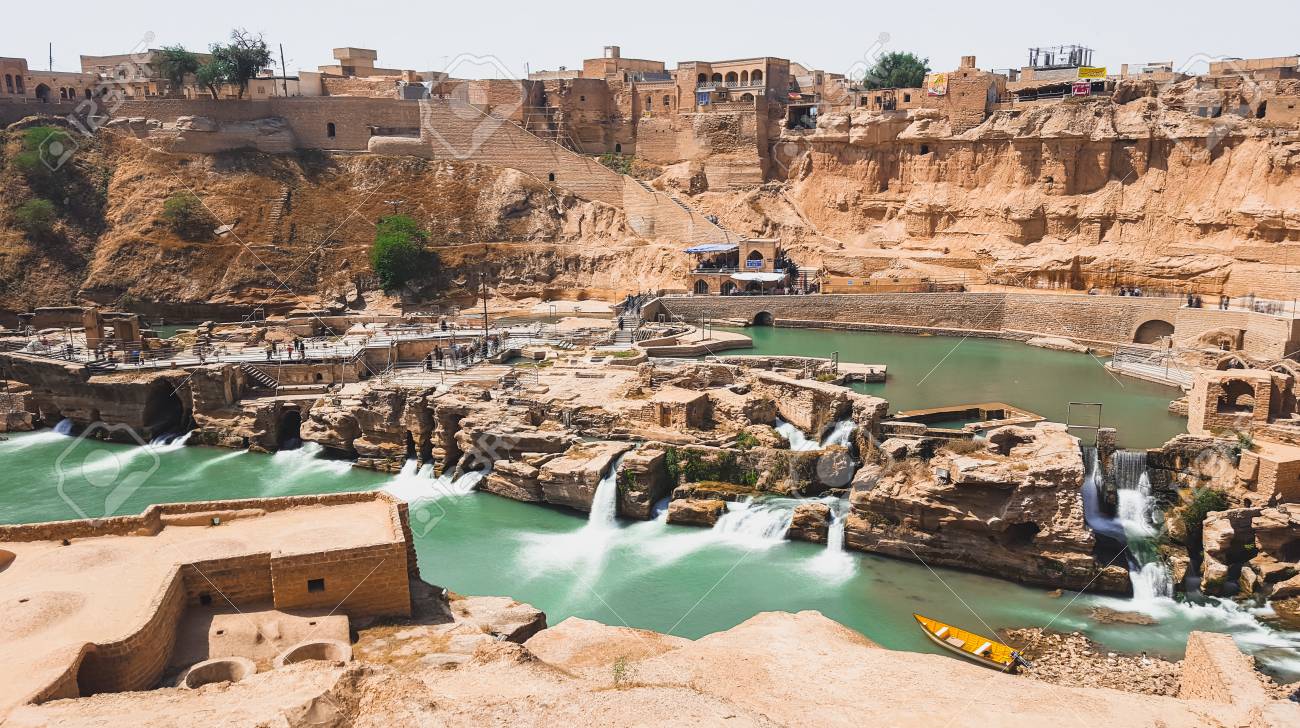Shushtar Historical Hydraulic System
Shushtar-Historical-Hydraulic-System.jpg" alt="Shushtar Historical Hydraulic System" width="1920" height="1080" srcset="https://iranparadise.com/wp-content/uploads/2019/03/Shushtar-Historical-Hydraulic-System.jpg 1920w, https://iranparadise.com/wp-content/uploads/2019/03/Shushtar-Historical-Hydraulic-System-768x432.jpg 768w" sizes="(max-width: 1920px) 100vw, 1920px" />
Shushtar is a city in Khuzestan province, southwest of Iran. It’s situated at the foot of Zagros Mountains, about 90 km north of Ahvaz. In most historical periods from Sassanid to Pahlavi, this city was the capital of Khuzestan province. Shushtar owes much of its fame to the historical hydraulic system located there.
The Shushtar Hydraulic System in the island city of Shushtar is a complex irrigation system that dates back to the time of the Achaemenid king Darius the Great in the 5th century BCE. Described by UNESCO “as a masterpiece of creative genius”, the Shushtar Hydraulic System involved the creation of a diversion canal on the river Karun to form a moat around the city, over which bridges and gates were built to keep away unwanted visitors. A system of subterranean channels called Ghanats connected the canals to the private reservoirs of houses, buildings and watermills. These tunnels supplied water for domestic use and irrigation, as well as to store and supply water during times of war when the main gates were closed. Although this complex system of irrigation degenerated during the 19th century, traces of the Ghanats can still be found in the crypts of some houses.

Shushtar historical hydraulic system is a masterpiece to the fullest and represents the advancement of industry and technology in ancient Iran. Darius, the king of Achaemenid dynasty has begun the construction of this great structure, although it has been restored and completed in many years by various dynasties, including the Sassanid dynasty.
The Ab-i Gargar canal branches off the Karun and rejoins the main river 50 km downstream, creating an island called Mianâb or “Paradise”. Shushtar is located at its northern end while the rest was used for orchard plantations. The 500 meter long overflow dam located downstream over the Karun river is called Band-e Kaisar or “Caesar’s Dam”, and was the key structure of the system responsible for retaining and diverting river water into the irrigation canals in the area. Another smaller barrage, the Band-e Mizan, was erected upstream to control the flow of water into the Ab-i Gargar canal. According to various historical texts, the entire Shushtar hydraulic complex was built in as little as three to seven years. Three tunnels lead the water provided by Gargar weir into the complex. The entering water is divided up through numerous canals, turns the mill wheels, and then, falls into a basin in form of water cascades. They create an amazing and fascinating view in your eyes. Shushtar historical hydraulic system is one of the masterpieces of civil engineering in the world.

The most interesting and tourist worthy part of the system are the spectacular cliffs from which water cascades into a downstream basin. It then enters the plain situated south of the city where it has enabled the planting of orchards and farming over an area of 40,000 hectares. The hydraulic system has served the area for thousands of years and was still in use as recently as a few decades ago when it began to fall into disrepair and was eventually abandoned.
With more than 200 steps, it’s located in the south of the water cascades area, connecting them to the residential areas overlooking the complex. The stairway bears some inscriptions which demonstrate its history. The ancient water treatment techniques used in Shushtar historical hydraulic system is something unique you can hardly find anywhere else. It draws so many visitors and archaeologists to the area from all over the world. You can also be one of these visitors enjoying and admiring this civil engineering masterpiece.
Shushtar-Historical-Hydraulic-System-m-main.jpg" alt="Shushtar Historical Hydraulic System-m-main" width="1250" height="500" srcset="https://iranparadise.com/wp-content/uploads/2019/03/Shushtar-Historical-Hydraulic-System-m-main.jpg 1250w, https://iranparadise.com/wp-content/uploads/2019/03/Shushtar-Historical-Hydraulic-System-m-main-768x307.jpg 768w" sizes="(max-width: 1250px) 100vw, 1250px" />

